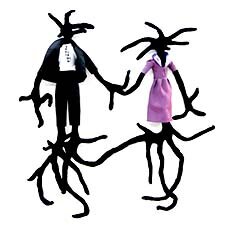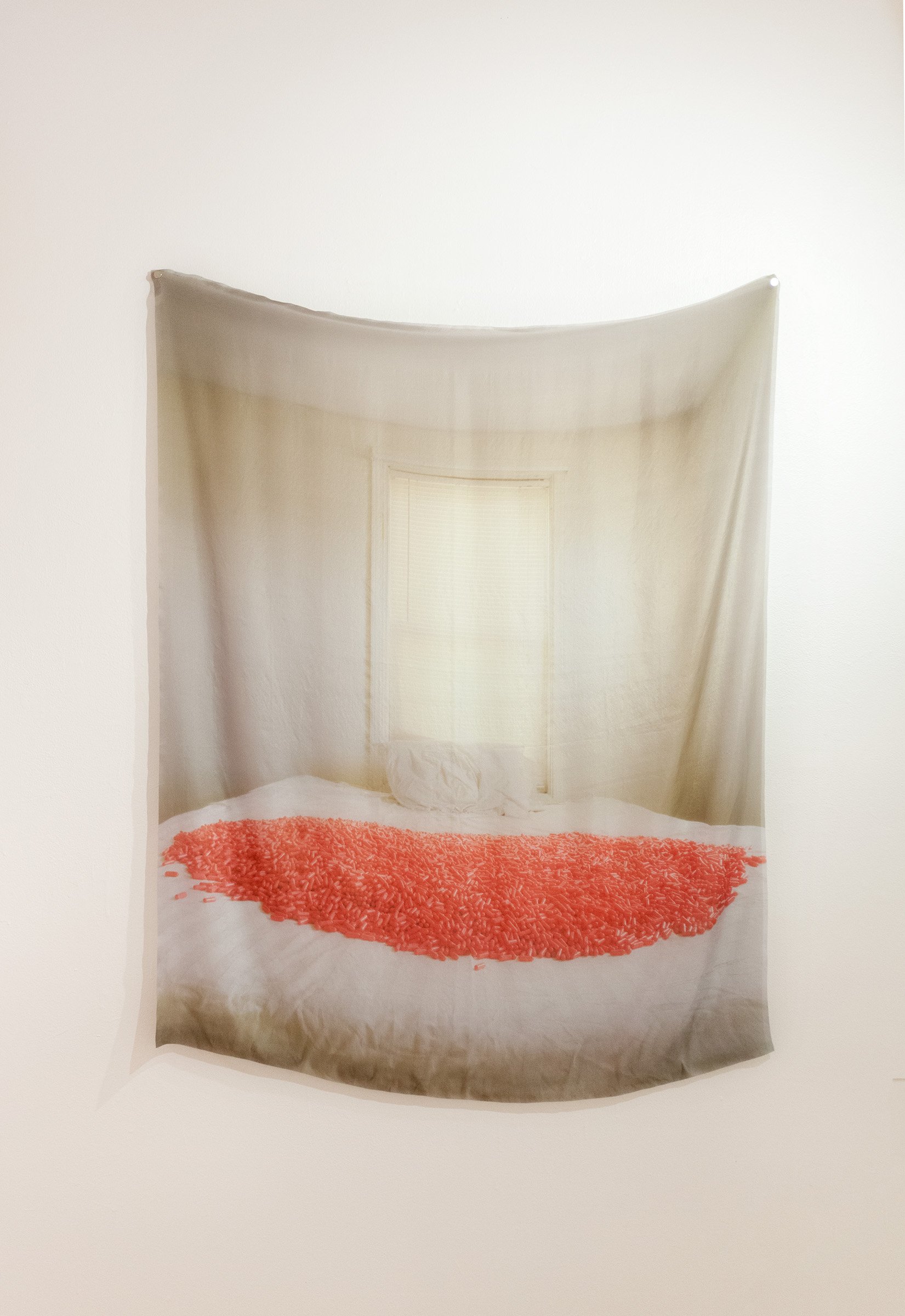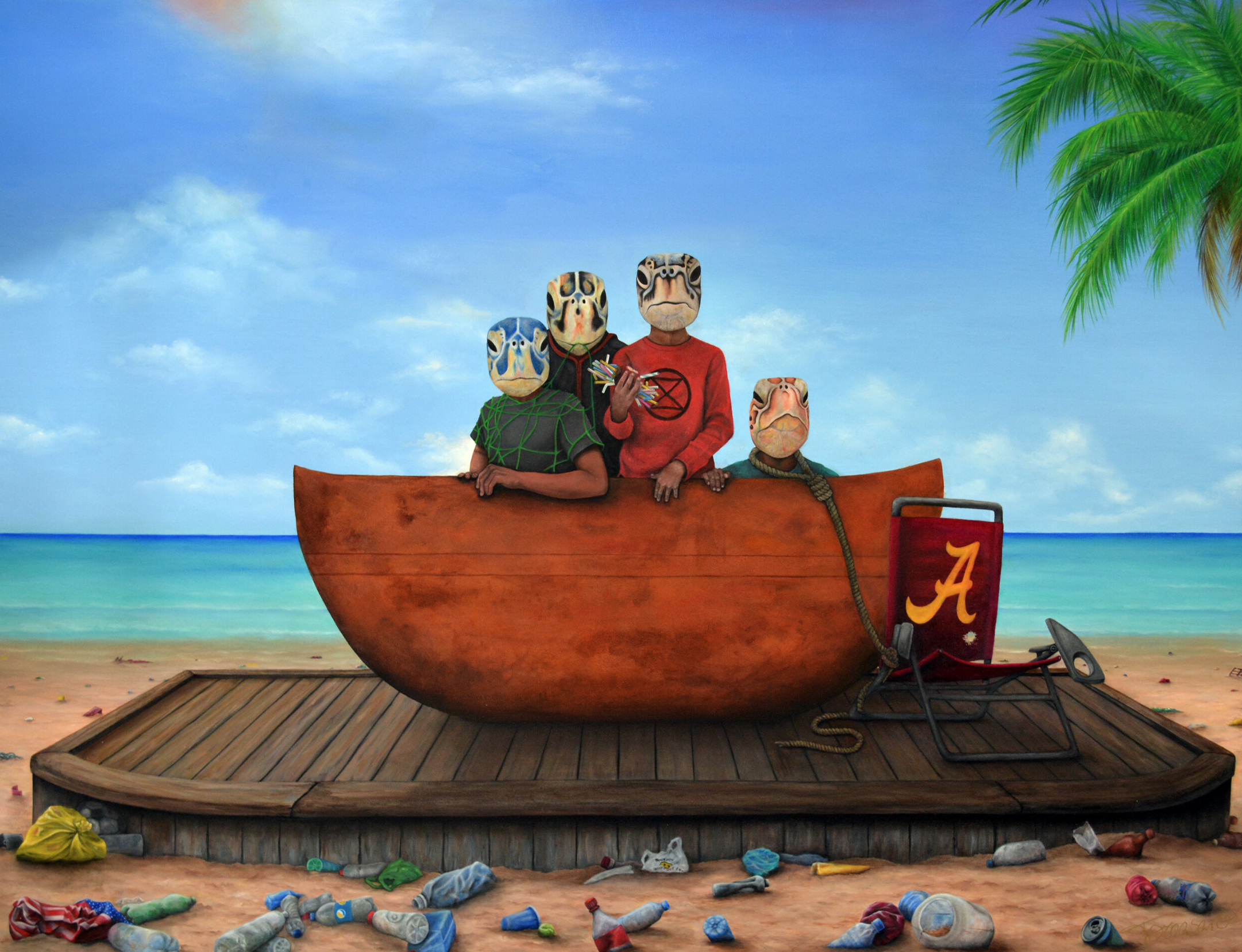Sanctuary City Curatorial Statement
Land is not empty space.
Let's imagine for a second if anyone is ever happy or excited to search for sanctuary. It usually is connected to a last-resort scenario, where all other options have failed, and entails fear, hopelessness, and hurt.
If we compare the idea of sanctuary to places devoted to endangered species, the same issue arises. Why was it necessary to create these restricted territories in the first place? Is the neglect of living beings so absolute that they are continuously pushed into smaller and smaller spaces in order to keep them safe? Safe from whom? Safe from extinction? So here we are in need of more and more - yet smaller and smaller sanctuaries.
This is where the conversation becomes more complex. There’s not one singular threat when experiencing forced immigration, the results of climate change, land theft, or cultural and racial injustices. There are endless hurdles. They range from profiling to physical violence, and at its extremes tragic murders, and traumatizing hate crimes seen too often. There’s not one easily identifiable enemy, although one could argue that supremacist ideaologies are at the heart of these hurdles. The otherification and dehumanization of individuals, classism and economic disparity are also common denominators in this equation of bigotry.
We are not here to support the notion of a Sanctuary or the concept of a Sanctuary City with acceptance or docility, but to analyze the underlying reasons for its existence. Should we be thankful for these spaces for the paltry protections they offer? Or should we be focusing on changing the systems that make Sanctuaries necessary? I believe the latter.
The artists gathered here are holding space for the plurality of the experiences lived by immigrants and refugees. Experiences of trauma are commonplace in the lives of immigrants, but that does not invalidate or diminish the experiences and narratives of love, found family, resilience, resistance, and friendship. We dive into this conversation with heightened awareness, open ears, and hearts, taking in the themes presented to us in hopes to learn, and creating more welcoming and safe environments for immigrant and refugee populations.
Julia Csekö
Sanctuary city (French: ville sanctuaire; Spanish: ciudad santuario) refers to municipal jurisdictions, typically in North America, that limit their cooperation with the national government's effort to enforce immigration law. Leaders of sanctuary cities say they want to reduce fear of deportation and possible family break-up among people who are in the country illegally, so that such people will be more willing to report crimes, use health and social services, and enroll their children in school. In the United States, municipal policies include prohibiting police or city employees from questioning people about their immigration status and refusing requests by national immigration authorities to detain people beyond their release date, if they were jailed for breaking local law.[1] Such policies can be set expressly in law (de jure) or observed in practice (de facto), but the designation "sanctuary city" does not have a precise legal definition. The Federation for American Immigration Reform estimated in 2018 that 564 U.S. jurisdictions, including states and municipalities, had adopted sanctuary policies.[2][3][4]
Studies on the relationship between sanctuary status and crime have found that sanctuary policies either have no effect on crime or that sanctuary cities have lower crime rates and stronger economies than comparable non-sanctuary cities.[5][6][7][8] Sanctuary city policies substantially reduce deportations of undocumented immigrants who do not have criminal records, but have no impact on those who have violent criminal records.[9] Opponents of sanctuary cities argue that cities should assist the national government in enforcing immigration law, and that sanctuary cities increase crime. Supporters of sanctuary cities argue that enforcement of federal law is not the duty of localities, and that law enforcement resources can be prioritized towards better purposes
Featuring
Curatorial Statement
What is a Sanctuary City, and whom does it serve?
In early conversations planning this exhibition, one of the artists inquired: “Sanctuary for whom?” This artist was being priced out of an apartment in Somerville and having to undergo radical life changes due to gentrification.
A Sanctuary City does not protect us from gentrification, that’s for sure.
What is a Sanctuary? And why do we need them? The first reaction is generally positive, of preservation, of safety. However, when we explore this term deeper, the conversation becomes more complex.
Could we compare Sanctuary Cities to natural preserves and Indigenous Reservations? By making this comparison, we have to recognize the entanglement of this term with settler-colonial mentality, with genocidal and extractivist practices that led to the normalization of the concept of Sanctuaries and Reservations.
Speak Up 2020 – Piano Craft Gallery, Boston, Nov 6th to Nov 29th 2020
Curatorial Statement
Community engagement has always been central to my identity as an artist. In Brazil after completing my BFA I helped found an artist collective, Grupo Py, dedicated to creating multi-generational exhibitions occupying both conventional galleries and non conventional spaces, such as houses under construction, and even a ferryboat. In parallel I organized and participated in committees and established a dialog with the Brazilian government, at both the municipal and federal levels, winning several victories within our cultural sector, such as increasing the national budget for the Arts from 0.3% to 1% in the early 2000s and bringing the conversation of decolonization of public spaces and monuments to an official capacity in our city.
Speak Up is an extension of this drive - to offer my fellow artists platforms to explore difficult subjects that often involve political themes and commentary.
Our art spaces need to reflect the issues of our times, offer sanctuary and a sense of belonging, and it is a pleasure to experience the multiple voices in lively conversation in this exhibition. The work on view calls us to action, it reminds us of past victories and that the work is never done. Linda Pearlman Karlsberg’s “She Spoke Up”, honors the legacy of women who have spoken truth to power and blazed trails in securing women's rights and liberation, giving these women faces and names in beautifully crafted portraits.
Domenic Esposito’s sculptures “Can You Hear me Now” stand tall in the space. They each grip megaphones from 3 different decades and bring the energy of protests into the gallery. Each silhouette gives us hints of their message and era. One sports a friendly and relaxed stance, holding up the peace sign, referencing the generation that opposed the war in Vietnam - rekindling their legacy of demanding peace and love as crucial items in political participation and action. Another figure stands rigid and defiant, holding a megaphone hinting towards the 40’s and 50’s reminding us of the origins of the civil rights movement. It begs us to realize that the civil rights movement continues to unfold in our lifetime. In 2020 we have seen the BLM movement grow in our collective hearts and minds, upsetting the deep-set cultural and historical systemic racism and colonialism that lingers into the 21st Century.
Jeff’s Ian Carrol’s work picks up the same topic. “We don’t dial 911” is an ugly truth. Too often a call to 911 results in tragedy - like George Floyd’s murder. That tragedy resulted in a nation standing up in equal parts rage and compassion. Jeff goes on to call for defunding the police, a statement often misunderstood and in dire need of further exploration.
Defunding means changing the current model that keeps repeating the same deadly mistakes, and it could start with simple steps - such as triaging calls in more effective ways. As many of us know, a majority of 911 calls are not violent offenses but mental health issues or concerned citizens that could be met with social workers instead of armed officers. We can invest more in preventative community building within our educational system. We can also multiply and strengthen cultural spaces - teaching creative subjects, and soft skills, creating places that offer a sense of belonging and joy. If we follow this line of thought, the conversation naturally steers into achieving universal income and healthcare as means to prevent violence and create a more just and equal society.
Jodie Mim Goodnough’s 36,835 takes a deeper look at the treatment of mental health, often bloated with medication that can be harmful and traumatic. Jodie’s work speaks directly to the precariousness of the healthcare system in North America, and its perception as a privilege instead of a basic right.
As we continue to wind through the issues of our times, Mac Pierce’s Opt-Out Cap takes us to the digital surveillance sphere, proving that those suffering oppression can take action to counteract it. Mac was inspired by facial recognition software being used to track protestors and dissidents in China in 2019. In his own words: “The cap is assembled using common materials that are cheaply and easily accessible - with publicly available plans. Once assembled, it conceals its purpose by hiding the panels inside the cup of the cap. When deployed, the printed panels block the users face and replace it with an alternate. This misdirects tracking, while not flagging the user as displaying an obscured face.” Accessibility is at the heart of Mac’s approach - he teaches anyone who cares to learn how to make their own Opt-Out Cap - reminding us of the copyleft culture - offering alternatives to structural capitalism.
In Jamal Eversley’s piece “Hope”, we see the bright futures grounded in the hard work of human rights activists such as Dr. Martin Luther King. Jamal’s work upholds Dr. King’s vision. The joyful colors and the open smile provide stamina, strength, and beauty to the fight for a peaceful and just society. Jamal brings education and creativity to the heart of the united world we want to see. His sculpture speaks volumes about the labor of love and the generosity of people pouring their time and energy to end bigotry. We must be open to different perspectives, but ALWAYS be prepared to Speak Up when we hear or see something that is unjust, unfair, and wrong.
It is a time to focus on healing from the looming shadow of totalitarianism that we have experienced over the past four years. We must also finally address the need to quickly adapt to the challenges that climate change will continue to bring into our lives.
It is a time to demystify the cult of wealth and celebrity. Who do we want to cherish and elevate? How do we want to reflect who we are? Who do we want to lead us?
It is time to find beauty and value in simple things, such as friendship, compassion, and companionship. It is time to see and uphold the dignity of every life form on our planet, like Raquel Fornasaro’s piece Tamar - in which humanoid turtles lock eyes with us - demanding to be seen as equals and not exotic beasts.
We need to set our sights up high, and like many before us, such as Rosa Parks, John Lewis, Dr. Martin Luther King, Chico Mendes, Marielle Franco, and so many others who continue to fight, be unwavering - and never lose faith that change is possible - and that we can bring it about ourselves.
As we say in Portuguese: A Luta é contínua. “The fight is continuous.”










